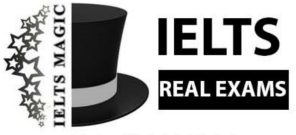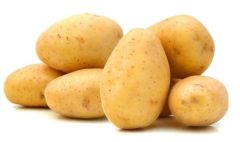PASSAGE 3 Asian space return of an Asian invention
26 تیر 1403 1403-08-12 11:01PASSAGE 3 Asian space return of an Asian invention
READING PASSAGE 3
You should spend about 20 minutes on Questions 27-40, which are based on Reading Passage 3.
Questions 27-32
Reading Passage 3 has six sections, A-E.
Choose the correct heading for each section from the list of headings below. Write the correct number, i-viii, in boxes 27-32 on your answer sheet.
List of headings
i Asian need for new space technology
ii Independence through the greater adaptability of satellites
iii Ancient inventions linked to the future
iv An early start but slow initial progress
v Non-technical factors affecting Asia’s entry to the space age
vi Application of rocket technology to warfare
vii New and wide-ranging uses of space technology
viii The difficulty of identifying types of satellites
27 Section A
28 Section B
29 Section C
30 Section D
31 Section E
32 Section F
Asian space: return of an Asian invention
A. Planet Earth is today circled by scores of satellites, orbiting like tiny moons after being sent aloft by rockets to perform a variety of useful tasks. Their story began long ago but rocket technology has progressed considerably since the days when bamboo poles filled with gunpowder were first used in China as fireworks around 500 BC, and since the Sung dynasty when rockets were first used to repel invaders at the battle of Kaifeng (Kai-fung-fu) in AD 1232. In Asia in recent years there has been a dramatic growth in space activities both in the utilisation of space-based services and the production of satellites and launchers. This rapid expansion has led many analysts to predict that Asia will become an important provider of services in space.
B. Worldwide there have been dramatic developments in space technology, and these have been eagerly embraced by Asian nations, which have found them to be especially adaptable for their particular problems. Asia, and Southeast Asia in particular, experiences recurrent large-scale environmental problems including storms and flooding, forest fires, and crop failures. The space application that has attracted the most attention in this region, therefore, is remote sensing. Remote sensing satellites, equipped with instruments to take photographs of the ground using different wavelengths, provide essential information about natural ground cover and planted crops, and this information facilitates work in environmental management, disaster prevention, and sustainable planning.
C. Imaginative and innovative applications of satellites are constantly being explored, with potentially revolutionary effects. To take a specific example, small antennas no more than 40 cm across and 15 cm high are embedded in slabs of stone, which are themselves embedded in the earth. Every 15 seconds a global positioning system measures the distance between each antenna and a satellite. The data is transferred to one of 200 monitoring stations around the world and provide a constant flow of information invaluable for the prediction of earthquakes. Asian nations have also eagerly embraced satellite technology in the field of health and telemedicine: patients in remote rural communities can be diagnosed and carers can be advised on medical treatment. Such things as pictures of the patient, pulse rate temperature, blood pressure and blood oxygen can be monitored and transmitted to doctors thousands of kilometres away for reliable diagnosis and advice. There have also been beneficial advances in distance education programs, and agricultural planning and production have improved.
D. Access to the benefits of satellites was not always as straightforward as it might seem today. For decades, Japan has been the dominant space power in Asia. To achieve its pre-eminence, however, Japan had to face serious time-consuming technological challenges and high risks through many trials. This experimentation was problematic at first because Japan based its satellite manufacturing on traditional.and very expensive Western military technological practices
E. In more recent times, fundamental changes in satellites have dramatically reduced costs. ‘Small satellites’ have given Asian countries a way to develop low-cost satellite technology and rapidly establish a space capability of their own. The new entrants in the industry are able to shorten the time for trials by as much as a decade or more. Small satellites, which have opened the space age to developing countries, are classified in three groups: nano satellites have a mass less than 10 kg, micro satellites range from 10 to 100 kg and mini satellites are between 100 and 500 kg. Such is the appeal of small satellites that low-cost launcher rockets are being developed exclusively for mini satellites. The saving is even greater for nano and micro satellites, which can be launched as secondary passengers, hitching a ride on large launchers with pay-load to spare. Small satellites allow individual countries to select more convenient orbits for their own particular purposes. A low polar orbit is good for mapping. As the earth rotates from west to east, the satellite orbits north and south allowing It repeatedly to photograph any chosen parts of the Earth’s surface.
F. Space technology in Asia has been facilitated by the competitive commercial sector and its production of low-cost mini satellites. The globalisation of industrial and financial markets has improved avenues for transferring technological innovation, and the availability of ready-made commercial technology may well result in a highly competitive Asian satellite industry. The laws of physics are the same all over the world, and the principles of electronics and mechanics know no political or cultural boundaries. However, engineering practice and management practice are not so readily transferable but are influenced by education, culture and history. These practices have an effect on costs, lead times, product designs and, eventually, international sales. Nevertheless, it can be expected that the acquisition of technical expertise, combined with the world- renowned Japanese manufacturing and management techniques, will soon produce world-class satellites at reduced costs.
Questions 33 – 36
Complete each sentence with the correct ending, A-G, below. Write the correct letter, A-G, in boxes 33-36 on your answer sheet.
33 Southeast Asian countries wish to photograph vegetation from above because
34 Asian countries are interested in advances in medical treatment using satellite technology because
35 Satellites in polar orbits are useful for mapping because
36 Management practices are not universally adaptable because
A they are seeking plants with medicinal value
B they can take pictures of any area required
C They depend on what has happened in the past
D they do not take up a lot of space abroad rockets
E they have locations that are difficult to reach
F they help students with their studies
G they suffer from such things as forest fires
Questions 37 – 40
Do the following statements agree with the information given in Reading Passage 3. In boxes 37-40 on your answer sheet, write
TRUE if the statement agrees with the information
FALSE if the statement contradicts the information
NOT GIVEN if there is no information on this
37 In 500 BC rockets were used in battle in China.
38 The distance between satellites and antennas on Earth can be used to detect movement in the Earth’s crust.
39 Distance education has increased literacy levels in Asia.
40 Commercial competition prevents technological innovation spreading.
27. iii . Their story began long ago…This rapid expansion has led many analysts to predict that Asia will become an important provider…
28. vi Worldwide there have been dramatic developments in space technology, and these have been eagerly embraced by Asian nations, which have found them to be especially adaptable for their particular problems.
29. vii Imaginative and innovative applications of satellites are constantly being explored, with potentially revolutionary effects. (health and telemedicine, education, agricultural planning)
30. iv Section D describes Japan’s challenges in developing its space program.
31. ii In more recent times, fundamental changes in satellites have dramatically reduced costs. ‘Small satellites’ have given Asian countries a way to develop low-cost satellite technology and rapidly establish a space capability of their own.
32. v The laws of physics are the same all over the world, and the principles of electronics and mechanics know no political or cultural boundaries. However, engineering practice and management practice are not so readily transferable but are influenced by education, culture and history.
33. G) to facilitate work in environmental management, disaster prevention, and sustainable planning (paragraph B) – Remote sensing satellites provide information about ground cover and crops, useful for environmental management.
34. E) patients in remote rural communities can be diagnosed and carers can be advised on medical treatment (paragraph C) – Telemedicine allows for remote diagnosis and medical advice through satellites.
35. B) As the earth rotates from west to east, the satellite orbits north and south allowing it repeatedly to photograph any chosen parts of the Earth’s surface (paragraph E) – Low polar orbits allow satellites to repeatedly photograph specific areas as the Earth rotates.
36. C) They are influenced by education, culture and history (paragraph F) – Engineering and management practices are influenced by cultural and historical factors.
37. FALSE (paragraph A) – While rockets were indeed used in China around 500 BC, the passage specifies their use as fireworks (paragraph A).
38. TRUE (paragraph C) – The passage describes a system using antennas and satellites to measure distance and predict earthquakes.
39. NOT GIVEN (passage doesn’t discuss literacy levels) – The passage mentions distance education programs but doesn’t link them to increased literacy rates.
40. FALSE (paragraph F) – The passage suggests the commercial sector and competition can accelerate the spread of technological innovation.







